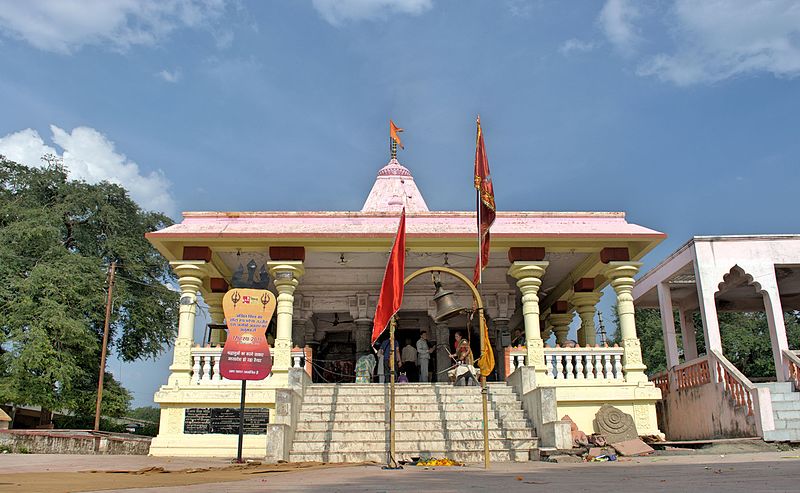While Ujjain is best known for the Mahakaleshwar shrine, one of the 12 jyotirlingas and is the prime attraction for pilgrims visiting the city, the place boasts much more for the visitors.
Though Ujjain is home to a large number of temples and religious sites,it is also a popular tourist destination in Madhya Pradesh because of its religious significance. It is one of India’s four sacred cities, where the famous Hindu festival ‘Kumbh Mela’ is held every 12 years.
During my recent trip to Ujjain I had the opportunity to visit most of the temples. I found two of them very interesting for the mythology and practices followed in these temples. While Mangalnath Temple is believed to be the birthplace of planet Mars (Mangal), Kaal Bhairav Temple of Ujjain is where liquor is offered to the Lord. A large number of tourists, including foreigners, visit this wonderful destination to enjoy the sight of these magnificent temples and other places of worship that add to Ujjain’s beauty. Ujjain, as one of the most popular tourist destinations in Madhya Pradesh, is an excellent choice for religious tourism in India.
This magnificent town, also known as Ujjain, Ujjayini, Avanti, and Avantikapuri, is located on the eastern bank of the Shipra River. It houses the most beautiful temples and shrines, most of which are different manifestations of Lord Shiva. The Mahakaleshwar Jyotirlinga shrine is one of the most popular tourist destinations in Ujjain, drawing visitors from all over the world to see the best of this historical city.
But, here in this post I shall talk about the very interesting Kal Bhairav Temple which has the weird tradition of offering liquor to the deity and mysteries associated with the shrine.
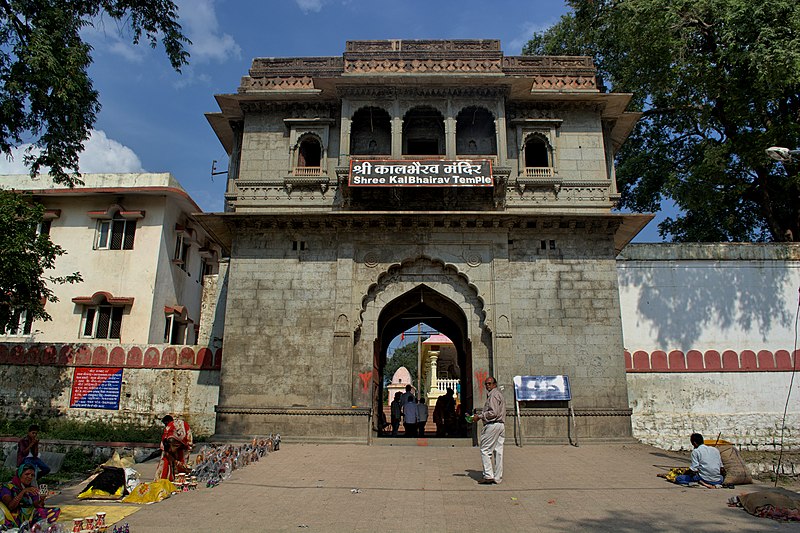
Post Contents
Who is Kaal Bhairav?
Bhairav (terrible) or Kaal Bhairav is a Hindu and Buddhist deity worshipped in Shaivite and Vajrayana traditions. He is a powerful manifestation of Shiva, or avatar, associated with annihilation in Shaivism. Bhairava represents Supreme Reality, which is synonymous with Para Brahman in the Trika system. Bhairava is also known as Dandapani in Hinduism, because he punishes sinners with a rod or Danda, and Swaswa, which means “whose vehicle is a dog.” In Vajrayana Buddhism, he is regarded as a fierce bodhisatva emanation and is also known as Heruka, Vajrabhairava, and Yamantaka.
Kal Bhairav is highly revered in India, Nepal, and Sri Lanka, as well as in Tibetan Buddhism.
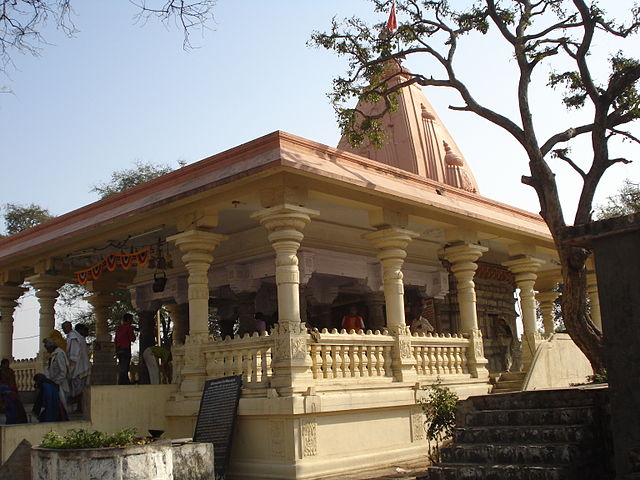
Related Article: Your Ultimate Guide to visit Mahakaleshwar Temple in Ujjain
Kaal Bhairav in Hinduism
Bhairav is derived from the word bhiru, which means “dreadful.” Bhairav translates as “terribly fearsome form.” It is also referred to as one who destroys fear or one who is fearless. According to one interpretation, he protects his devotees from dreadful enemies, greed, lust, and anger. These adversaries are hazardous because they never allow humans to seek God within. Another interpretation is that bha means creation, ra means sustenance, and va means destruction. As a result, Bhairav is the one who creates, sustains, and dissolves life’s three stages. As a result, he becomes the ultimate or supreme.
There are many versions attributed to the origin of Bhairav, the first one begins with a conversation between Brahma and Vishnu, as told in the Shiva Mahapuranam. Vishnu asked Brahma, “Who is the supreme creator of the Universe?” Brahma told Vishnu, arrogantly, to worship him as the Supreme Creator. Brahma had an idea one day “I’ve got five heads. Shiva has five heads as well. I am Shiva because I can do everything Shiva does.” As a result, Brahma became a little egotistical. Furthermore, he began to forget Shiva’s work and began interfering with what Shiva was supposed to be doing.
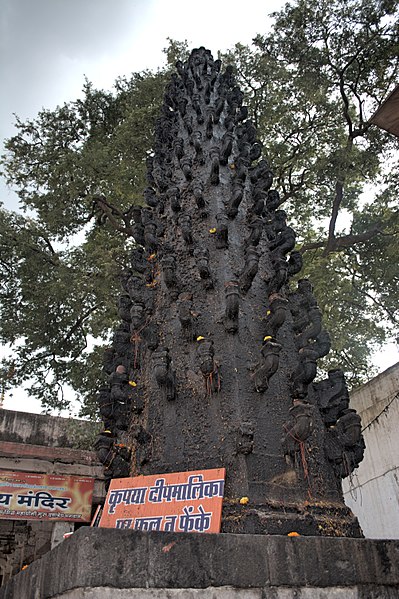
Seeing this, Shiva threw a small hair from his head that took the form of Kala Bhairava and casually proceeded to cut off one of Brahma’s heads. Brahma’s skull (Kapala) is held in the hands of Kaal Bhairav; Brahma’s ego was destroyed, and he attained enlightenment. He became useful to himself and the world after that, and he was eternally grateful to Shiva. Shiva is said to be guarding each of the Shaktipeeth in the form of the Kala Bhairava (Shakti temples). Each Shaktipeeth is accompanied by a Bhairav temple.
Another school of thought holds that Shiva created Bhairav himself. Dahursura was a demon who got the boon that he could only be killed by a woman. Parvati disguised herself as Kali in order to kill him. Kali’s wrath destroyed the demon. Her wrath was transformed into a child after she killed the demon. Kali gave the child some of her milk. Shiva merged Kali and the child with him. Bhairava manifested in his eight forms (Astanga Bhairavas) from this merged form of Shiva. Bhairav is considered to be one of Shiva’s sons because he was created in this manner by Shiva.
The origin of Bhairav also finds mention in the Puranas. In the puranic version, gods and demons were at odds. Shiva created Kaal Bhairav, from whom Astanga Bhairavas were born, to eliminate the demons. These Ashta Matrikas married these Ashta Bhairavas. These Ashta Bhairavas and Ashta Matrikas have frightening appearances. These Ashta Bhairavas and Ashta Matrikas gave birth to 64 Bhairavas and 64 Yoginis.
Also Read: Some interesting facts about the Mangalnath Temple of Ujjain
Kaal Bhairav In Buddhism
In Buddhism Bhairav has been revered as a deity and dharmapala or dharma protector. The various Buddhist forms of Bhairava (also known as Herukas, Vajrabhairava, and Yamantaka) are fierce deities and yidams (tantric meditational deities) in Tibetan Buddhism. They also have their own set of Buddhist tantras, the Vajrabhairava tantras. According to Tibetan legend, these tantras were revealed to Lalitavajra in Oddiyana in the 10th century.
These texts are especially important in Tibetan Buddhism, particularly among the Gelug school, where Vajrabhairava is one of the three central highest yoga tantra practices of the lineage. As a result, it is also revered as a protector deity in Mongolia and was popular among the Manchus. The tantric practices associated with Bhairava are concerned with the transformation of anger and hatred into comprehension.
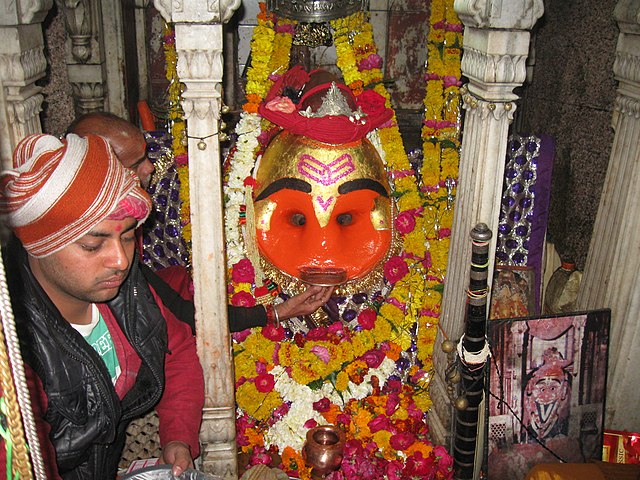
K.vishnupranay/Wikimedia Commons
Kaal Bhairav Temple of Ujjain
The temple is named after Kala Bhairav (or Kal Bhairava). The face of the deity is a rock layered with vermilion. The deity’s silver head is adorned with a Maratha-style pagri, a tradition that dates back to Mahadaji Shinde..The worship of Ashta Bhairava (“eight Bhairavas”) is a Saivite tradition, and the Kala Bhairav is regarded as their chief. Kala Bhairav worship was traditionally popular among the Kapalika and Aghora sects, and Ujjain was a major centre for these sects.
Kaal Bhairav is the guardian deity of Ujjain and believed to have been appointed by Lord Shiva to Ujjain where he is worshipped as Mahakala.
The temple structure that we see today was built over the remains of an older temple. The original temple is believed to have been built by one king named Bhadrasen. It has been mentioned in the Avanti Khanda of the Skanda Purana. Images of Shiva, Parvati, Vishnu, and Ganesha from the Paramara period (9th-13th century CE) have been recovered from the site. Malwa paintings once adorned the temple walls. However, only traces of these paintings can now be seen.
The present temple structure reflects Maratha influence. It is said that after the Maratha defeat in the Third Battle of Panipat (1761 AD), Maratha general Mahadaji Shinde offered his pagri (turban) to the deity, praying for victory in his campaign to restore Maratha rule in North India. He restored the temple after successfully resurrecting Maratha power.
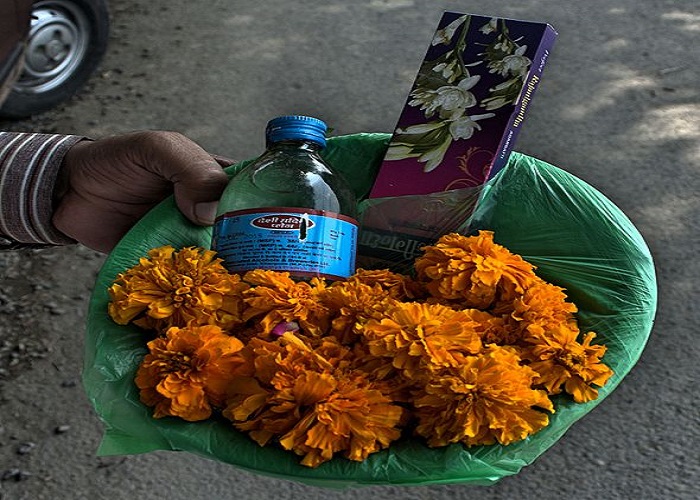
You may also Like: All You Need To Know About Badrinath Dham
The tradition of liquor offering at Kaal Bhairav in UIjjain
What makes Kaal Bhairav Temple of Ujjain different from other shrines and quite unusual is the tradition of offering liquor to the deity. This weird tradition draws the attention of the pilgrims and visitors and they throng the temple in hundred and thousand everyday. Liquor is offered to the temple deity as one of the five tantric ritual offerings known as panchamakara: madya (alcohol), maansa (meat), meena or matsya (fish), mudra (gesture or parched grain) and maithuna (sexual intercourse). In older times, all five offerings were made to the deity, but now only alcohol is offered; the other four offerings are in the form of symbolic rituals.
Outside the temple, vendors sell baskets of offerings, containing coconuts, flowers and a bottle of liquor. In 2015, the State Government set up liquor counters outside the temple to ensure that the devotees are not swindled by unlicensed vendors of alcohol. The counters sell both country liquor and foreign liquor.
Hundreds of devotees offer liquor to the deity on a daily basis. The devotees hand the priest the liquor bottles, which he pours into a saucer. He then prays and places the saucer near the deity’s lips. He tilts the plate slightly, and the liquor begins to disappear. As prasad, about one-third of the bottle is returned to the devotee.
According to temple priests and devotees, the slit has no cavity and the deity miraculously swallows the liquor offered to him. The temple priest, however, does not allow visitors to examine the statue. The priest claims that only he is capable of performing the miracle and that all others who have attempted to do so have failed.
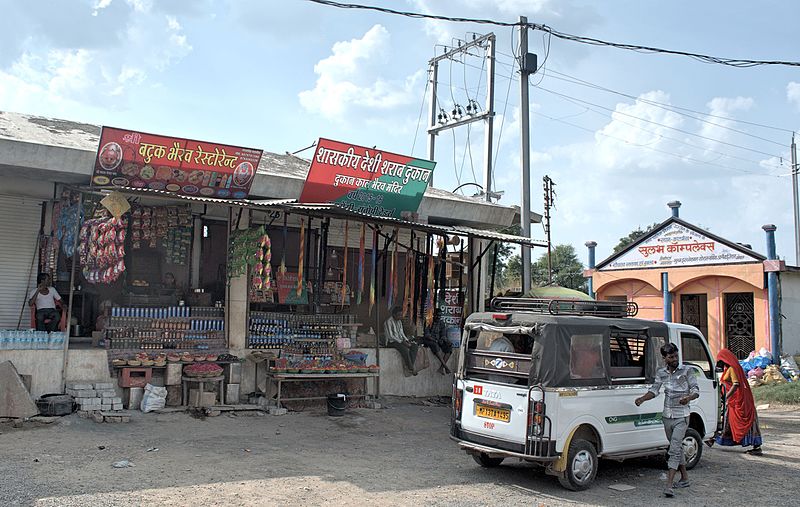
Do Read: Top places to visit enroute Rishikesh-Badrinath road trip
How to get to Kaal Bhairav Temple in Ujjain?
The nearest airport to Ujjain is Devi Ahilyabai Holkar Airport, which is 55 kilometres away. You can easily get a cab or a bus from here to the temple. If you are traveling by train, the nearest railway station is Ujjain Junction, which is only 7 kilometres away from the temple. The temple is just 20 minutes away.
By road, there are buses from almost all of the nearby major towns to the Ujjain Bus Stand, which is less than 20 minutes from the temple. You need to take a cab to reach Kal Bhairav Temple. Most visitors opt for a temple trip of Ujjain after darshan of the Mahakaleshwar Jyotirlinga. The trip usually takes 2-3 hours and covers most of the shrines including the Kaal Bhairav Temple. The trip cost is about Rs 400. But you should be lucky to get a good cab driver. Ujjain is infamous for bad cab service. The cab drivers either overcharge you or loot you in other ways.
During my recent trip to Ujjain I was fortunate enough to get a good cab driver. Abhisek Thakur, our cab driver was a young lad who was all through our two days visit to the city and helped us to make the most out of our Ujjain tour. Those wishing to visit Ujjain in near future can contact him at +918085110992. I assure you that he wouldn’t let you down.
Travel Tips
- Kaal Bhairav temple of Ujjain is an unusual shrine shrouded in mysteries which makes it a must-visit in the city. Make sure you don’t miss this temple during your trip to Ujjain.
- Avoid visiting Ujjain in summer as it can be very hot and temperature may go up to 45 degree C. The monsoon brings a lot of rain while winter is pleasant. October to March are ideal months to visit Ujjain and the iconic Kaal Bhairav Temple.
- Take a cab to visit the temples that dot Ujjain. Kaal Bhairav Temple is one of the most visited temples in the city..
- There are many places to visit in Ujjain and nearby the Kaal Bhairav Temple, including Kaliadeh Palace, Mahakaleshwar Temple, Ram Mandir Ghat, Harsiddhi Temple, and many more.
- The visitors don’t have to pay any entry fee to enter Kaal Bhairav Temple. In fact, entry is free for the visitors in all the temples and places of interest in Ujjain. You don’t have to pay any kind of fee anywhere whether you are an Indian or a foreigner.. .

